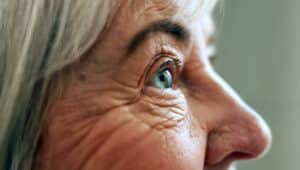
Cataracts are the leading cause of vision impairment, especially in seniors. According to the American Academy of Ophthalmology, cataracts affect approximately 25 million Americans age 40 and older. And by age 75, approximately half of all Americans have cataracts.
In older adults, the eye’s crystalline lens yellows and hardens, resulting in blurry vision, dull color perception, and difficulty seeing at night. Cataracts worsen over time, so it’s essential to understand the stages of cataract progression to treat symptoms early and slow or even stop the progression of cataracts.
An ophthalmologist can provide you with an accurate cataract diagnosis and help you plan an appropriate course of treatment.
What is a Cataract?
As we age, the clear natural lenses of the eye begin to harden and yellow, becoming cloudy. This now opaque area over the lens is called a cataract. Cataracts prevent light rays from passing through the lens, making it difficult to see. You can develop a cataract in one or both eyes, but you can’t have more than one cataract per eye, and cataracts cannot spread from one eye to the other.
What are the Symptoms of Cataracts?
Cataracts can vary in severity, and the appropriate treatment depends on the type and progression of the condition. Recognizing early symptoms is key to preserving your vision. Common early signs include:
Cloudy Vision
One of the most noticeable early signs of cataracts is the appearance of cloudy or fuzzy areas in your field of vision. These spots often begin as small visual distortions but gradually worsen, making daily activities more difficult. If you experience sudden or persistent cloudy vision, it’s important to see an eye doctor as soon as possible to prevent further decline.
Difficulty Seeing at Night
Many patients with early-stage cataracts report a gradual decrease in their ability to see clearly at night. Cataracts can cause vision to darken or dim and may introduce a yellow or brown tint. These changes are often less noticeable during the day but become more apparent in low-light conditions.
Increased Light Sensitivity
Cataracts can lead to growing discomfort with bright lights. If you find yourself squinting or closing your eyes in bright environments, or if you experience sudden headaches triggered by light exposure, it may be a sign of developing cataracts.
Halos and Glare Around Lights
As the lens of the eye becomes cloudy and less flexible, you may begin to notice halos or glare around lights. This occurs when light is diffracted as it passes through the cataract. These effects are often more noticeable at night and can interfere with activities like driving.
Eye Examination Results
In the earliest stages, cataracts may not cause noticeable symptoms. That’s why regular eye exams are essential, especially for older adults. Eye care professionals can detect cataracts before you experience vision problems, allowing for earlier monitoring and management.
How to Slow Down Cataract Progression
Small cataracts do not always develop quickly, so patients and their families usually have plenty of time to consider options and discuss treatment and/or prevention with an ophthalmologist. Some may stop progressing altogether after a certain point, but cataracts never go away on their own, and if they continue to grow, they can cause blindness if left untreated.
Although cataracts are not reversible, there are some things you can do that may help slow down the progression of cataracts. Just be sure to speak with an eye doctor first to determine if cataract surgery is needed or recommended before your symptoms get worse.
- Switch to an “eye-healthy” diet that includes leafy greens, nuts, whole grains, citrus fruits, and cold-water fish rich in omega-3 fatty acids.
- Wear sunglasses or a brimmed hat outside during the day to protect your eyes from sun exposure, which may speed up the progression of cataracts.
- Talk to your eye doctor if you take eye drops to treat dry eyes or arthritic flare-ups in the eyes, as some eye drops may speed up the progression of cataracts.
- Ask about the side effects of any prescribed medications that may speed up cataract progression.
- Undergo regular eye examinations to track the progression of cataracts and adjust your course of treatment as necessary before the symptoms become more problematic.
Learn More About Cataract Surgery
Think you might have cataracts? Cataract surgery could be the solution to clearer vision and a life with less dependence on glasses or contacts. While surgery isn’t always necessary in the early stages, acting early can help you avoid worsening vision problems down the road.
Download your free guide to discover everything you need to know about cataract surgery—including costs, insurance coverage, and how to find out if you’re a good candidate.

